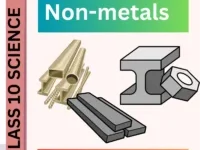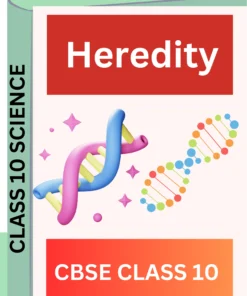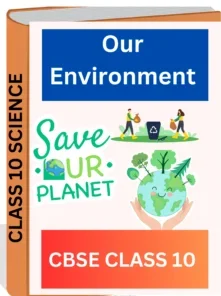## 5.1 Human Activities Affecting Ecosystems
### 5.1.1 Deforestation
Deforestation is a major human activity that significantly impacts ecosystems. As you learn about this topic, you’ll understand how cutting down forests for agriculture, urbanization, or resource extraction disrupts habitats and affects biodiversity. Some key points to consider:
* Loss of habitat for countless plant and animal species
* Disruption of water cycles and increased soil erosion
* Release of stored carbon, contributing to climate change
* Impact on indigenous communities who rely on forests for their livelihoods
### 5.1.2 Pollution
Various forms of pollution have severe consequences for ecosystems. Let’s explore the main types:
#### Air Pollution
* Sources: Industrial emissions, vehicle exhaust, and burning of fossil fuels
* Effects: Acid rain, smog formation, and respiratory issues for animals
#### Water Pollution
* Sources: Industrial waste, agricultural runoff, and improper waste disposal
* Effects: Eutrophication, fish kills, and contamination of drinking water sources
#### Soil Pollution
* Sources: Pesticides, heavy metals, and improper waste management
* Effects: Reduced soil fertility, contamination of food crops, and groundwater pollution
### 5.1.3 Overexploitation of Natural Resources
The excessive use of natural resources can lead to ecosystem degradation. Examples include:
* Overfishing: Depleting fish populations and disrupting marine food webs
* Excessive hunting: Threatening endangered species and altering ecosystem balance
* Unsustainable mining: Destroying habitats and polluting surrounding areas
## 5.2 Climate Change and Its Effects on Plants and Animals
Climate change is a global phenomenon with far-reaching consequences for ecosystems. As you study this section, you’ll gain insights into how rising temperatures and changing weather patterns affect plants and animals.
### 5.2.1 Effects on Plants
* Shifts in plant distribution and growing seasons
* Changes in flowering times, affecting pollinators
* Increased risk of wildfires and drought stress
* Spread of invasive species and plant diseases
### 5.2.2 Effects on Animals
* Alterations in migration patterns and timing
* Changes in breeding seasons and reproductive success
* Shifts in species distribution and range expansion
* Increased risk of extinction for species unable to adapt quickly
### 5.2.3 Ecosystem-level Changes
* Disruption of food webs and trophic cascades
* Changes in ecosystem productivity and nutrient cycling
* Alterations in species interactions and community composition
## 5.3 Endangered Species and Habitat Loss
Habitat loss is a primary driver of species endangerment. In this section, you’ll explore the causes and consequences of habitat loss and its impact on biodiversity.
### 5.3.1 Causes of Habitat Loss
* Urban expansion and infrastructure development
* Agricultural intensification and land conversion
* Extraction of natural resources (mining, logging, etc.)
* Climate change-induced habitat alterations
### 5.3.2 Consequences of Habitat Loss
* Fragmentation of ecosystems and reduced connectivity
* Increased vulnerability to predation and competition
* Loss of genetic diversity and increased inbreeding
* Disruption of ecosystem services and functions
### 5.3.3 Examples of Endangered Species
Explore case studies of endangered species affected by habitat loss:
* Sumatran Tiger: Threatened by deforestation and poaching
* Monarch Butterfly: Impacted by loss of milkweed habitat and pesticide use
* Polar Bear: Affected by melting sea ice due to climate change
## 5.4 Conservation Strategies and Sustainable Practices
Conservation efforts are crucial for protecting ecosystems and biodiversity. This section will introduce you to various strategies and practices aimed at preserving our natural world.
### 5.4.1 Protected Areas and Reserves
* National parks and wildlife sanctuaries
* Marine protected areas and no-take zones
* Biosphere reserves and ecological corridors
### 5.4.2 Species Recovery Programs
* Captive breeding and reintroduction efforts
* Habitat restoration and management
* Anti-poaching measures and wildlife trade regulations
### 5.4.3 Sustainable Resource Management
* Sustainable forestry practices and certification programs
* Responsible fishing practices and aquaculture
* Renewable energy sources and energy efficiency measures
### 5.4.4 Community-based Conservation
* Involving local communities in conservation efforts
* Promoting eco-tourism and sustainable livelihoods
* Traditional ecological knowledge integration
### 5.4.5 Policy and Legislation
* International agreements (e.g., Convention on Biological Diversity)
* National environmental laws and regulations
* Environmental impact assessments for development projects
## 5.5 Individual Actions for Conservation
As a student, you can play a role in ecosystem conservation. Here are some actions you can take:
* Reduce your carbon footprint through energy conservation and sustainable transportation
* Support sustainable products and companies with environmentally friendly practices
* Participate in local conservation efforts, such as habitat restoration or citizen science projects
* Educate others about the importance of ecosystem conservation
* Reduce, reuse, and recycle to minimize waste and resource consumption
## 5.6 Future Challenges and Opportunities
As you conclude this module, consider the following questions for reflection and discussion:
1. How can we balance economic development with ecosystem conservation?
2. What role can technology play in addressing environmental challenges?
3. How might climate change affect ecosystems in your local area?
4. What are the potential consequences of losing biodiversity for human well-being?
5. How can individuals, communities, and governments work together to promote sustainable practices?
By exploring these questions, you’ll deepen your understanding of the complex relationships between human activities and ecosystem health, and develop critical thinking skills to address future environmental challenges.








